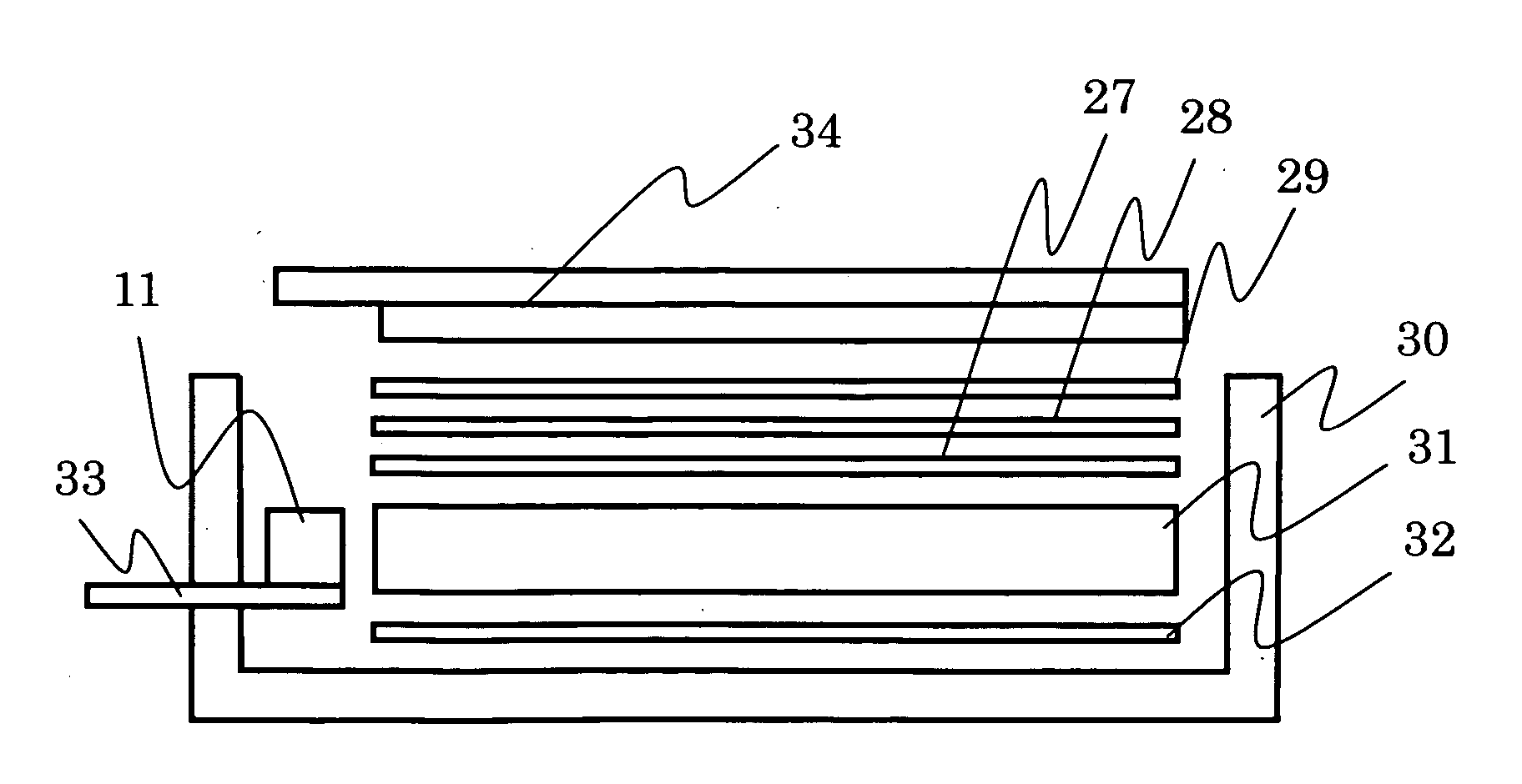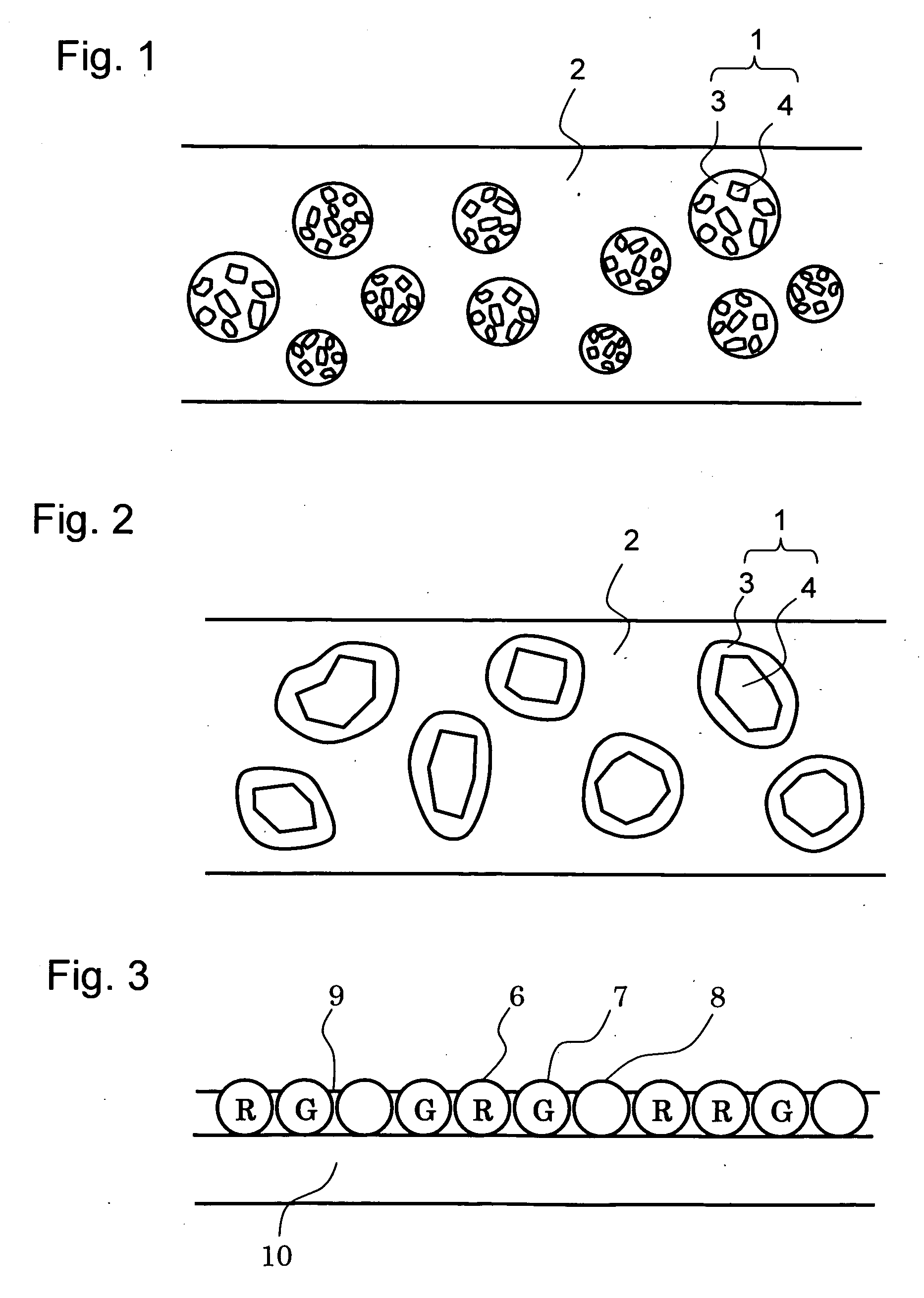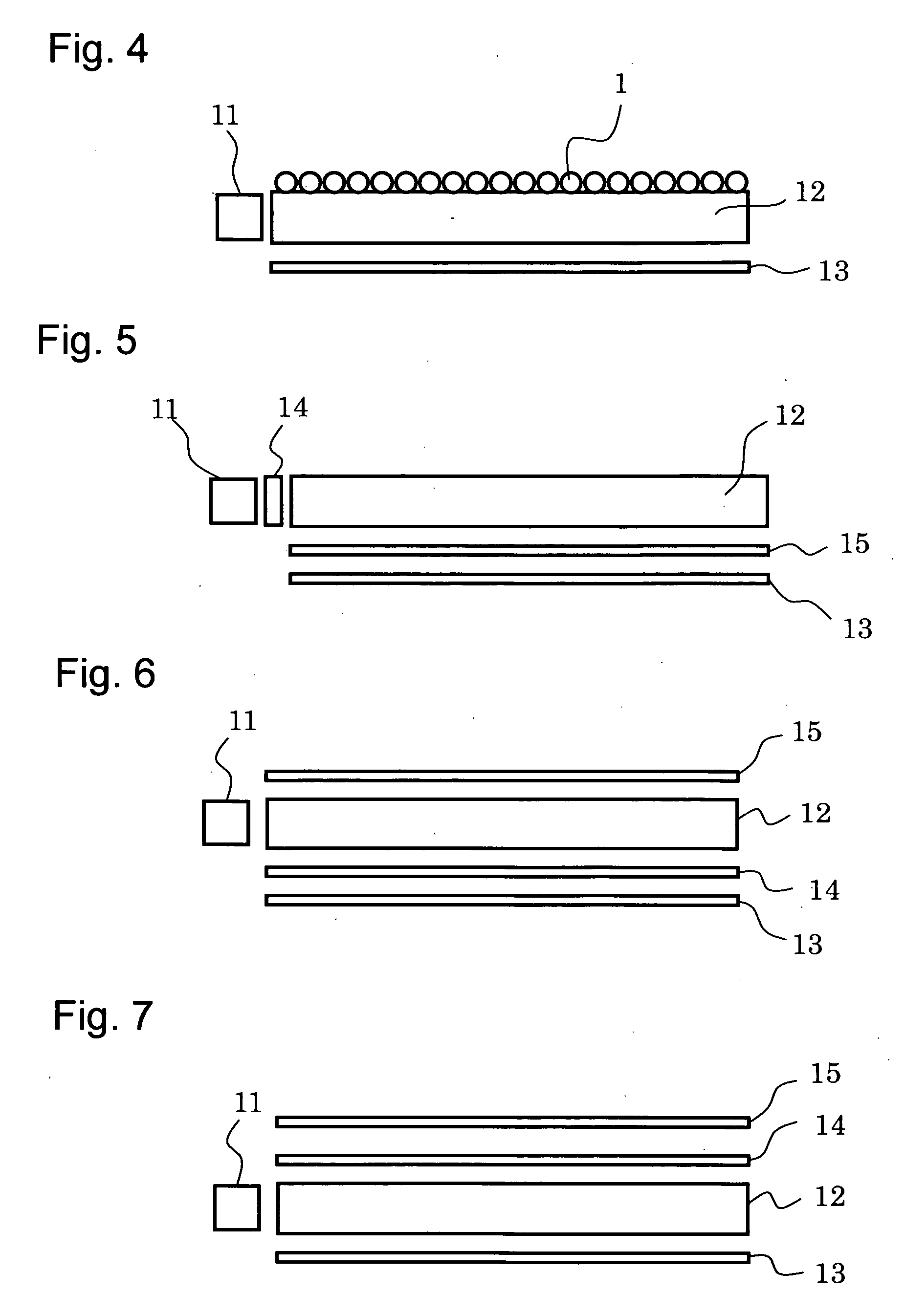Lighting unit, display device, and phosphor film
a technology of phosphor film and light conversion efficiency, which is applied in the direction of discharge tube luminescnet screen, lighting and heating apparatus, instruments, etc., can solve the problems of difficult to lengthen the lifetime of each of these phosphors, narrow color reproduction range, and low light conversion efficiency, and achieve long lifetime, wide color reproduction range, and high efficiency
- Summary
- Abstract
- Description
- Claims
- Application Information
AI Technical Summary
Benefits of technology
Problems solved by technology
Method used
Image
Examples
example 1
[0056]FIG. 1 is a sectional view schematically showing the constitution of a phosphor film of this example. As shown in the figure, phosphor beads 1 are mixed and dispersed into a transparent base material 2. Each of the phosphor beads 1 is formed by coating phosphor particles 4 with a water-impervious material 3, and is of a substantially spherical shape. At this time, the transparent base material 2 is of a film shape. A polymer material such as a silicone resin or a cycloolefin-based resin, or an inorganic material such as silicon dioxide or glass can be used as the water-impervious material 3. When the above inorganic material is used as the water-impervious material 3, the material 3 can be formed by growing the inorganic material around the phosphor particles 4 by means of a well-known sol-gel method. A polymer material such as an acrylic resin, a silicone resin, an epoxy resin, polycarbonate, or a cycloolefin resin, or an inorganic material such as silicon dioxide can be used...
example 2
[0059]FIG. 2 schematically shows the sectional constitution of a phosphor film of this example. This example is different from Example 1 in that any one of the phosphor particles 4 is coated with the water-impervious material 3. In this case as well, the same phosphor particles and water-impervious material as those of Example 1 can be used. In the case where any one of the phosphor particles 4 is coated with the water-imperious material 3, phosphor particles having a large average particle size (about 50 μm) can be used in forming the phosphor beads 1. The maximum particle size of many commercially available phosphor particles is about 10 to 50 μm, so the use of the phosphor beads of this example increases the degree of freedom in selection of materials for phosphor particles, and facilitates the design of a luminescent color.
[0060] In addition, the phosphor beads 1 each structured as shown in this example allow the cladding thickness of the water-impervious material 3 to be arbit...
example 3
[0062] Next, FIG. 3 schematically shows the sectional view of a phosphor film according to this example. In this example, red phosphor beads 6 and green phosphor beads 7 described in the above examples, and translucent beads 8 each containing no phosphor in it are simultaneously present on a transparent film 10 in such a manner that they bind together with the aid of a binder 9 to form a single layer. As in the case of Example 1 or 2, a mixing ratio among the phosphor beads is adjusted depending on the chromaticity of a luminescent color which one attempts to obtain through color mixing. The translucent beads 8 can be produced by means of a sol-gel method using a polymer resin such as a styrene resin or an acrylic resin, or an inorganic material such as silicon dioxide or glass.
[0063] The phosphor film of this is produced by, for example, applying a UV curable adhesive as the binder 9 to the transparent film 10 formed of a polyethylene resin, an acrylic resin, or a cycloolefin-base...
PUM
 Login to View More
Login to View More Abstract
Description
Claims
Application Information
 Login to View More
Login to View More - R&D
- Intellectual Property
- Life Sciences
- Materials
- Tech Scout
- Unparalleled Data Quality
- Higher Quality Content
- 60% Fewer Hallucinations
Browse by: Latest US Patents, China's latest patents, Technical Efficacy Thesaurus, Application Domain, Technology Topic, Popular Technical Reports.
© 2025 PatSnap. All rights reserved.Legal|Privacy policy|Modern Slavery Act Transparency Statement|Sitemap|About US| Contact US: help@patsnap.com



